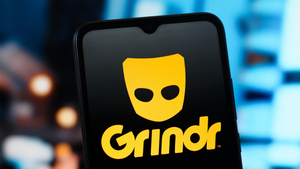An estimated 40% of homeless Americans identify as either lesbian, gay, bisexual, or transgender. To me, that’s not just a statistic, it’s personal: I was a homeless LGBT youth.
It was the classic situation of parents finding out that their child was not a heterosexual and immediately disowning her. Before I could even register what happened, I suddenly found myself without a legal residence, car, phone, or insurance of any kind. I was kicked out with just the clothes on my back. Pleas of reconnecting with my parents were met with “We’re done with you” or “You’re forbidden to come back. You will not see us again.”
They wouldn’t even let me see my younger siblings, the very children I helped raise, lest I “influence them” with my “mental illness.” Those were my mother’s actual words. After a while, my parents wanted me to come back but I had to leave my girlfriend and “just don’t be gay again.”
I was fortunate enough to be surrounded with several good friends, have a committed relationship, finally attain a legal residence, and hold two jobs by the time my parents decided my “yearlong punishment” was good enough and contacted me.
Others are not so fortunate. The Williams Institute confirms that 40% of the homeless are LGBT youth. That’s over 100,000 young people on the streets this winter, and about 30% of them are in some kind of emergency shelter or transitional living program. Sixty-eight percent of the homeless LGBT youth were rejected and forced out by their families, leaving them more prone to mental health and medical problems. LGBT youth who are rejected by their families are eight times more likely to commit suicide than the youth who have families that accept them. Their risk for HIV and physical and sexual abuse becomes dangerously high.
Our progressive organizations are certainly fervent in their pursuit of marriage equality and combating bullying, but the majority of them seem to be appallingly silent on this issue, which currently affects thousands of teens. It’s a combination of issues, relating to sexual orientation, gender identity, class, and race. It’s complicated, but couldn’t we all acknowledge that there’s more to social justice for the LGBT community than just marriage equality?
It’s not that I want to put issues against issues. All these issues are extremely important. It is totally possible to care about more than one cause at once and to fight for all without losing one. I promise. This is coming from a person who was once a homeless LGBT youth and has hopes of someday marrying and starting a family with her girlfriend. But it is time to prioritize LGBT youth. We can do better. We can expand our efforts and reach out. It’s time to stop treating these children like an invisible population. Their lives depend on it.
HANNAH LE is currently a contributor for Advocates for Youth, activist, and moderator of a reproductive/sexual health and rights blog.























































































 Cindy Ord/Getty Images
Cindy Ord/Getty Images

























